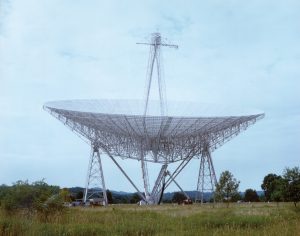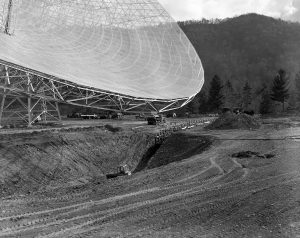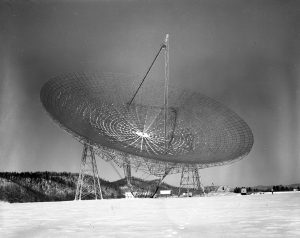The 300-foot telescope in Green Bank, West Virginia was a transit telescope, meaning that its dish did not track objects across the sky but watched them as they arced overhead. In the early 1970s, a tracking arm was installed up on the feed arm to slowly move the receivers in time with the movement of the sources the telescope was observing.


Creating space for the 300-foot telescope to move
In October, 1962, a trench was dug under the southern side of the 300-foot telescope in Green Bank, West Virginia to increase the telescope’s ability to dip lower and collect more data from the southern portions of the sky.

Snow Settles on the 300-foot
Although the surface of the 300-foot telescope in Green Bank, west Virginia was made of aluminum mesh, it still gathered snow. To remove it, telescope operators could dip the dish and hope the snow slid off, shovel it off, or try more creative means of releasing the burden from the dish. One method used was lighting fires underneath the mesh; however, these were soon extinguished by their own successful snow melting prowess. Another technique was an early form of industrial snow-blower — a Rolls-Royce jet engine!

Shadow in the snow cast by 300-foot Telescope
Since Green Bank is located in the mountains of West Virginia, it is not uncommon to see a significant amount of snowfall each winter.

Attaching the Surface to the 300-foot telescope
In early 1962, steelworkers attach the first surface panels of the 300-foot telescope in Green Bank, West Virginia. The panels were originally made from aluminum Squarex mesh.

Locating the Gusset Plate: The cause of the 300-foot’s collapse
After the investigation to determine the cause of the 300-foot telescope’s collapse on November 15, 1988, engineers pinpointed the location of the sheared metal gusset plate they found in the wreckage. The gusset plate is a thick sheet of steel used to hold and connect the beams of the telescope.





